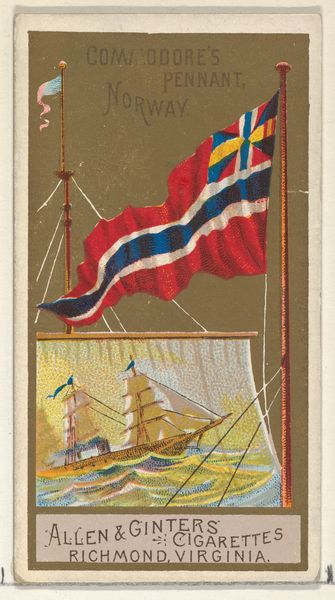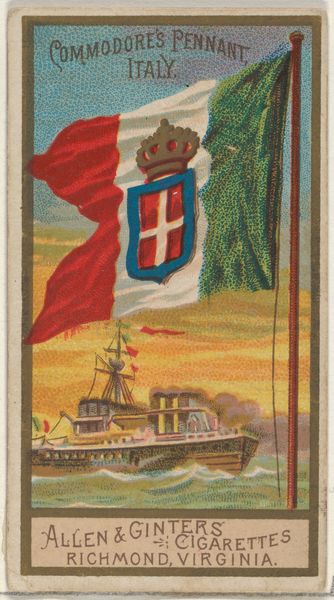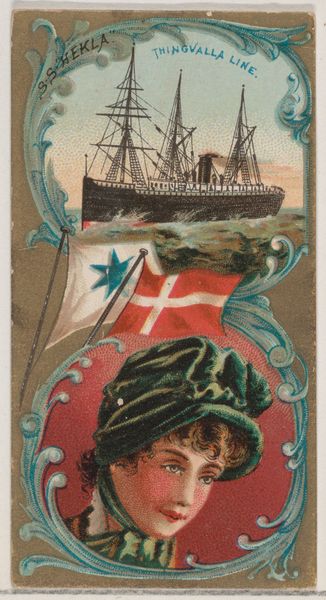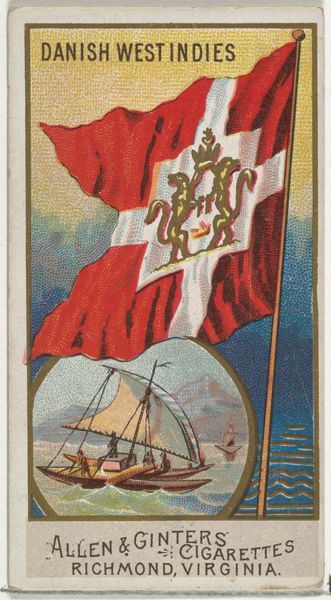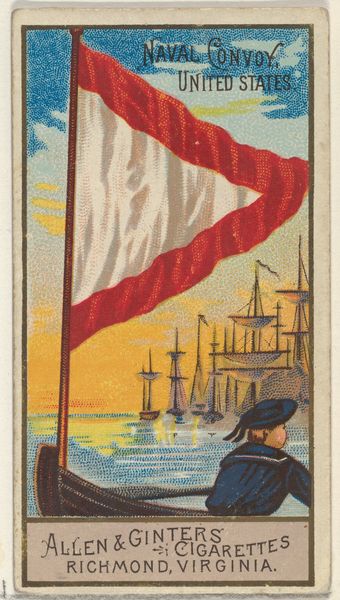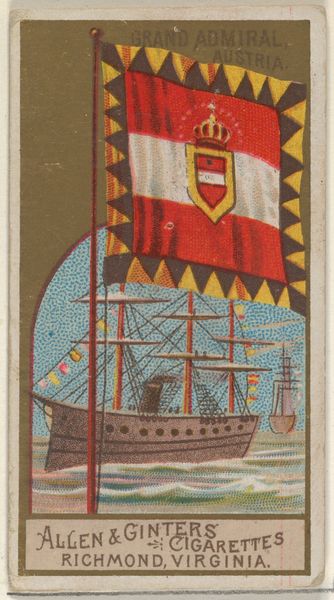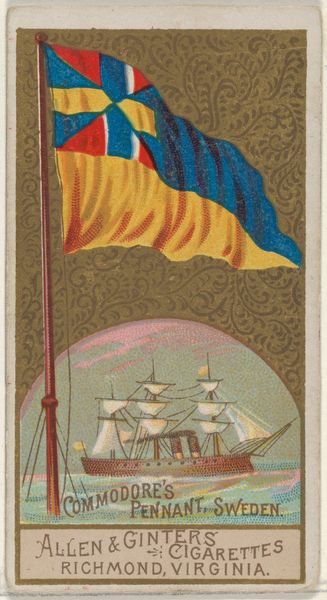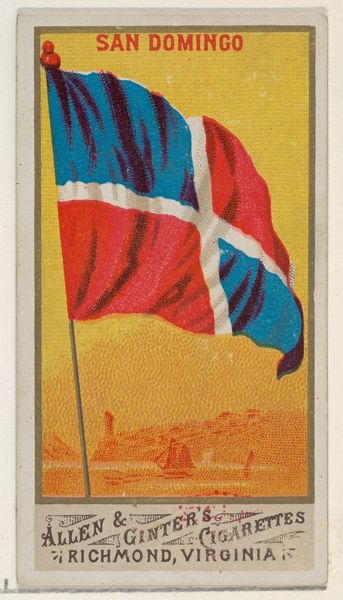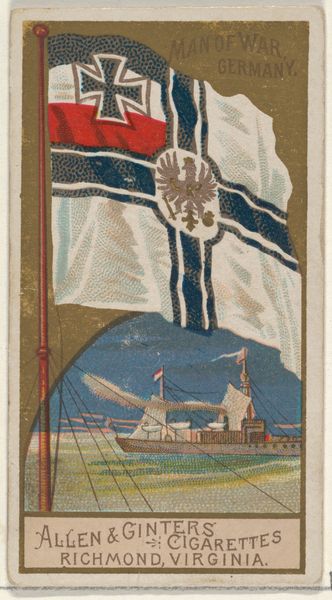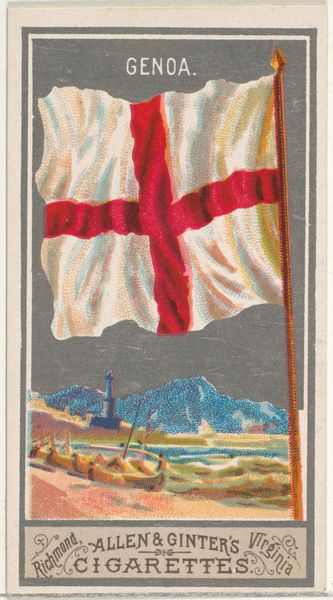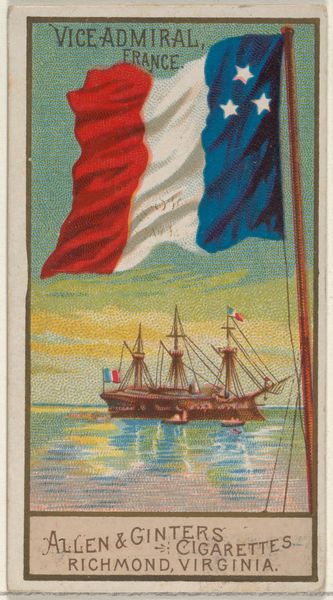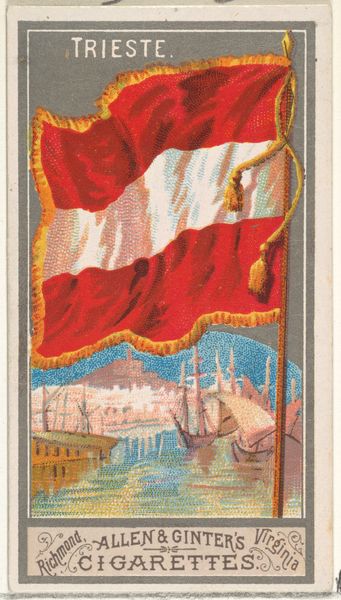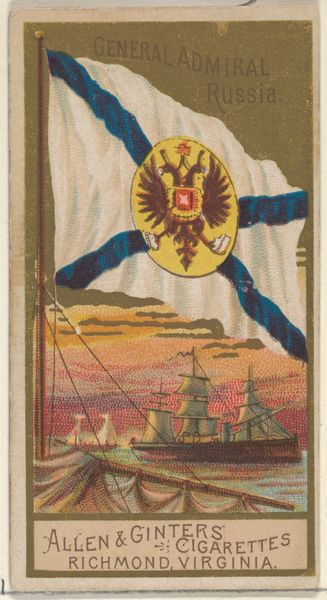
Vice Admiral, Denmark, from the Naval Flags series (N17) for Allen & Ginter Cigarettes Brands 1886 - 1891
0:00
0:00
lithograph, print
#
lithograph
# print
Dimensions: Sheet: 2 3/4 x 1 1/2 in. (7 x 3.8 cm)
Copyright: Public Domain
Curator: Immediately, I notice the flag. It dominates the frame with its intense red hue. There’s a certain serenity in the way it juxtaposes against the small vessel. Editor: This is a lithograph print from Allen & Ginter Cigarettes, circa 1886-1891, from a series of Naval Flags. It is titled “Vice Admiral, Denmark.” Curator: Fascinating. So, this wasn't intended as a piece of high art but as part of commercial branding? It shifts the context entirely when considering the consumption and disposability aspects of its design. Editor: Exactly. The choices in materials become crucial here. Lithography allowed for mass production and wider distribution within cigarette packs. These objects helped create a consumer culture saturated with these small representations of global power. What’s most curious to me is how this collectible participates in constructing late 19th-century national identities and their associated military might within imperial frameworks. Note the specific title, pointing not just to Denmark, but its military leadership. Curator: Yes, and how these cards become objects of exchange, tokens in a consumer system directly tied to tobacco use, a practice entangled with questions of labor, health, and addiction. These flags, so idealized, overshadow the harsh realities linked to the products that funded their creation. Editor: Further, Japonisme seems present. There’s a flat, graphic quality to the imagery, lacking traditional Western shading and perspective. Allen and Ginter employed similar techniques for baseball cards, integrating styles to capture the consumer’s eye. The exotic, often non-Western, images reinforced the aspirational aspects of cigarette consumption, positioning them as global consumers with sophisticated tastes. Curator: True. The visual design encourages a flattened and somewhat idealized impression, while the means of production expose a complex matrix of social relations and labor. Even the red dye might have interesting sourcing story. Editor: So the circulation of such images both reflected and reinforced dominant narratives of nationalism, commercial enterprise and imperialism. What begins as seemingly simple becomes an entry point into complex cultural systems of exchange and representation. Curator: A stark reminder to dig deeper and examine how consumer objects can act as vehicles for powerful narratives that perpetuate specific economic, and societal patterns, as something "minor" or collectible, is enmeshed in complicated operations. Editor: Yes, thinking critically about these images is important when contextualizing them and unraveling their ideological weight, even within something as seemingly ephemeral as a cigarette card.
Comments
No comments
Be the first to comment and join the conversation on the ultimate creative platform.
